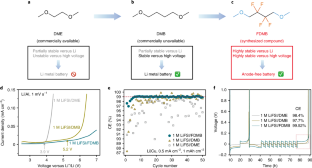(Transparent graphene electrodes might lead to new generation of solar cells)
2020/6/5 アメリカ合衆国・マサチューセッツ工科大学(MIT)

・ MIT が、大面積のグラフェン薄膜を基板から容易に転写するプロセスを開発。超軽量でフレキシブルな太陽電池や新タイプの発光デバイスを実現する、高品質の大面積グラフェン薄膜のロール・ツー・ロールによる作製が可能に。
・ 大気下で安定する透明薄膜電極の大面積製造方法の開発は、発光するスマートフォンのスクリーンや、光を捕獲する太陽電池のようなオプトエレクトロニクスデバイスの様々なアプリケーションに向けた薄膜電子技術開発における主要な目標。これらのアプリケーションでは、希少で高価な元素を含む酸化インジウムスズ(ITO)が利用されているが、これを代替する有機・無機材料開発が進んでいる。
・ 優れた導電性と機械特性を有しながら極めて薄くフレキシブルで安価な材料で作れるグラフェンは、化学気相蒸着(CVD)法で銅のシード層上に大面積シートを容易に製造できるが、銅基板からグラフェンを剥離する転写プロセスにおいてグラフェンシートの裂け、皺や欠陥が起こり易く、シートの連続性を断絶させて導電性が大幅に低減する問題があった。
・ 今回開発したプロセスは、産業規模生産にスケールアップが可能で、その優れた特性を維持したまま大面積のグラフェンシートをあらゆる種類の基板に転写できるようにする。同プロセスの鍵は、ポリマー材料のパリレンによるバッファ層をグラフェン層上に配置したこと。
・ 3 種類あるパリレンのうち、塩素原子をより多く含んだものはグラフェンと原子的に近く、グラフェンにドーピング効果を与える。このことが、大面積グラフェンの導電性を向上させる安定したアプローチを提供する。
・ 同パリレンバッファ層は、グラフェンと同様に CVD 法で製造できるため、製造プロセスとスケーラビリティーを簡易なものにする。パリレンは、通常電子デバイスの保護に使用され、マイクロエレクトロニクス産業で幅広く利用される材料。そのサプライチェーンと必要な機器は既に普及している。
・ 同プロセス技術の実証として、電極の 1 本に新グラフェン層を、デバイス基板にパリレン層をそれぞれ使用した概念実証用の太陽電池を作製。可視光下で 90%に近いグラフェンフィルムの光透過率を確認した。
・ 同グラフェンベース太陽電池では、重量出力比が ITO ベースの最先端デバイスを約 36 倍上回り、透明電極に使用した単位面積当たりの材料量はその 1/200。また、ITO を大きく超える利点は、グラフェンのコストがほとんどかからないこと。
・ このような超軽量グラフェンベースデバイスは、次世代アプリケーションの可能性を拓くもの。ポータブルデバイスでは重量出力比が最も重要な性能指数。さらなる研究が必要だが、例えば、タブレットに取り入れて電力を供給する透明太陽電池等のアプリケーションが考えられる。
・ 本研究は、MIT Energy Initiative 通じ Eni SpA、Institute for Soldier Nanotechnologies を通じ米国陸軍研究所(ARL、)および米国海軍研究局(ONR)が支援した。
URL: http://news.mit.edu/2020/transparent-graphene-electrodes-solar-cells-0605
<NEDO海外技術情報より>
(関連情報)
Advanced Functional Materials 掲載論文(アブストラクトのみ:全文は有料)
Synergistic Roll‐to‐Roll Transfer and Doping of CVD‐Graphene Using Parylene for Ambient‐Stable
and Ultra‐Lightweight Photovoltaics
URL: https://onlinelibrary.wiley.com/doi/abs/10.1002/adfm.202001924
Abstract
A roll‐to‐roll (R2R) transfer technique is employed to improve the electrical properties of transferred graphene on flexible substrates using parylene as an interfacial layer. A layer of parylene is deposited on graphene/copper (Cu) foils grown by chemical vapor deposition and are laminated onto ethylene vinyl acetate (EVA)/poly(ethylene terephthalate). Then, the samples are delaminated from the Cu using an electrochemical transfer process, resulting in flexible and conductive substrates with sheet resistances of below 300 Ω sq−1, which is significantly better (fourfold) than the sample transferred by R2R without parylene (1200 Ω sq−1). The characterization results indicate that parylene C and D dope graphene due to the presence of chlorine atoms in their structure, resulting in higher carrier density and thus lower sheet resistance. Density functional theory calculations reveal that the binding energy between parylene and graphene is stronger than that of EVA and graphene, which may lead to less tear in graphene during the R2R transfer. Finally, organic solar cells are fabricated on the ultrathin and flexible parylene/graphene substrates and an ultra‐lightweight device is achieved with a power conversion efficiency of 5.86%. Additionally, the device shows a high power per weight of 6.46 W g−1 with superior air stability.



